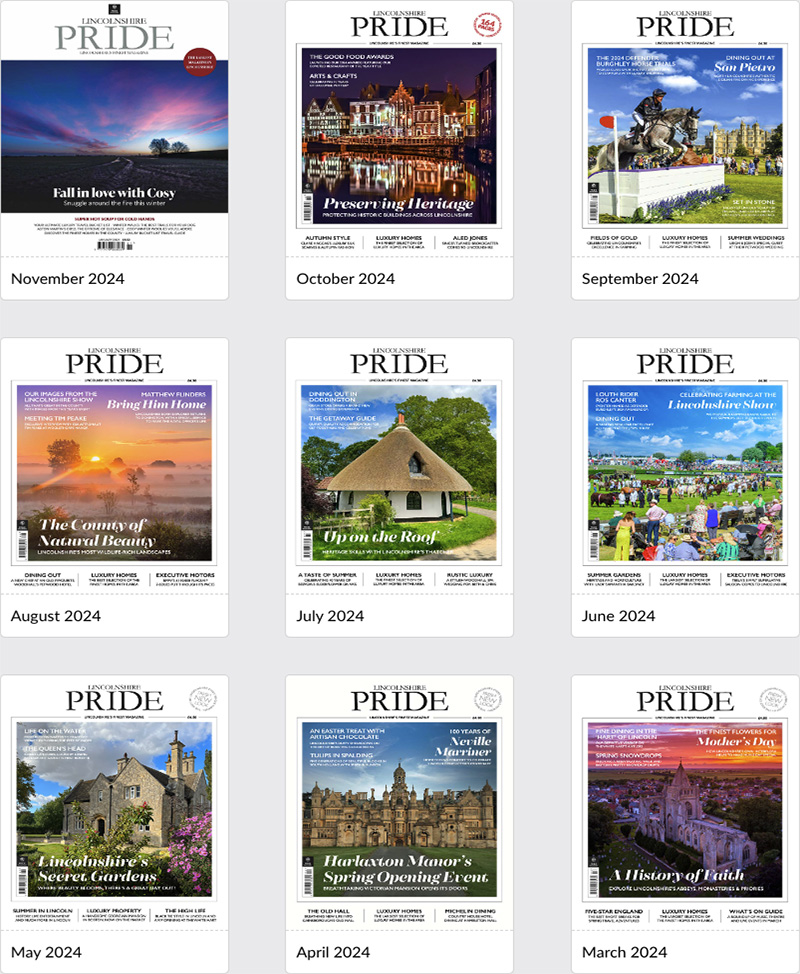
Where to find Winter Wildlife in Lincolnshire
Discover Lincolnshire’s winter wildlife, from grey seals at Donna Nook to deer in historic parks, set against the county’s stunning frosty landscapes and big skies.
As December arrives, Lincolnshire’s landscapes transform into a winter wonderland, offering a rich tapestry of wildlife. From wetlands and coastal marshes to rolling hills and ancient woodlands, the natural world thrives despite the colder months. For those willing to brave frosty mornings, Lincolnshire reveals a hidden world of activity.
Seals at Donna Nook
Each winter, the grey seals return to the East Coast including Donna Nook, to give birth to thousands of seal pups on the sandy beaches. The sight of these white-coated pups nestled against their mothers on the beach is truly something to behold. December is the peak of the pupping season, and visitors can watch as the young seals grow stronger and more independent, preparing for life in the wild. This annual event has made Donna Nook one of the most important grey seal breeding colonies in the UK, drawing nature lovers from across the country.
Winter Birds on the Lincolnshire Coast
Lincolnshire’s diverse habitats – from its expansive wetlands to its farmland and woodlands – make it a haven for birdlife, particularly during the colder months. The county’s vast skies and open spaces provide the perfect backdrop for the dramatic sight of migratory birds arriving to overwinter here.
The iconic wetlands of the Lincolnshire Wash and Frampton Marsh come alive with thousands of overwintering birds, creating a cacophony of calls and movement.
Frampton Marsh, an RSPB reserve, is a must-visit for birdwatchers in December. Whether you’re an experienced birder or a casual observer, the sheer variety of species, including golden plovers, lapwings, and the occasional hen harrier, offers plenty to marvel at.
Deer in the Woodland
While the coastal regions offer dramatic scenes of wildlife, Lincolnshire’s woodlands and parks also have their own winter charms. The county’s deer populations, especially around the historic parks of Belton House and Grimsthorpe Castle, are a particular highlight. The colder weather makes them more visible, as they gather in open spaces to graze and forage.
Nature in the Garden
You don’t have to venture far into the countryside to enjoy Lincolnshire’s winter wildlife. Many species make their way into local gardens and parks, bringing a sense of life and activity to even the coldest days. Robins, with their bright red breasts, are a common and welcome sight during December. Often seen perched on frosty fences or garden walls, their cheerful song stands out against the winter silence.
Garden feeders become lifelines for small birds such as blue tits, great tits, and finches, all of which rely on these extra supplies to survive when natural food sources become scarce. For nature lovers, December is a perfect time to stock up on birdseed and watch as flocks of hungry visitors descend, adding activity to your garden.
Smaller Mammals
Small mammals, too, are busily preparing for the colder months. While many species hibernate, squirrels remain active, scurrying through the treetops in search of food stores they’ve hidden earlier in the year. A winter stroll through ancient woods such as those at Bardney or Chambers Farm reveals the quiet but persistent life that continues despite the drop in temperature.
Lincolnshire’s Big Skies
One of the most magical aspects of Lincolnshire in December is the landscape itself. As temperatures dip, the early morning frost transforms the countryside into a glittering wonderland. In the late afternoon, as the sun sets early, the Lincolnshire sky often takes on hues of pink, purple, and gold, casting a warm glow over the frozen ground… it’s little wonder photographers refer to this as the ‘golden hour!’
In our December edition we also provide six suggestions for winter walks in the county, see https://www.pridemagazines.co.uk/lincolnshire/view-magazines?magazine=December-2024






